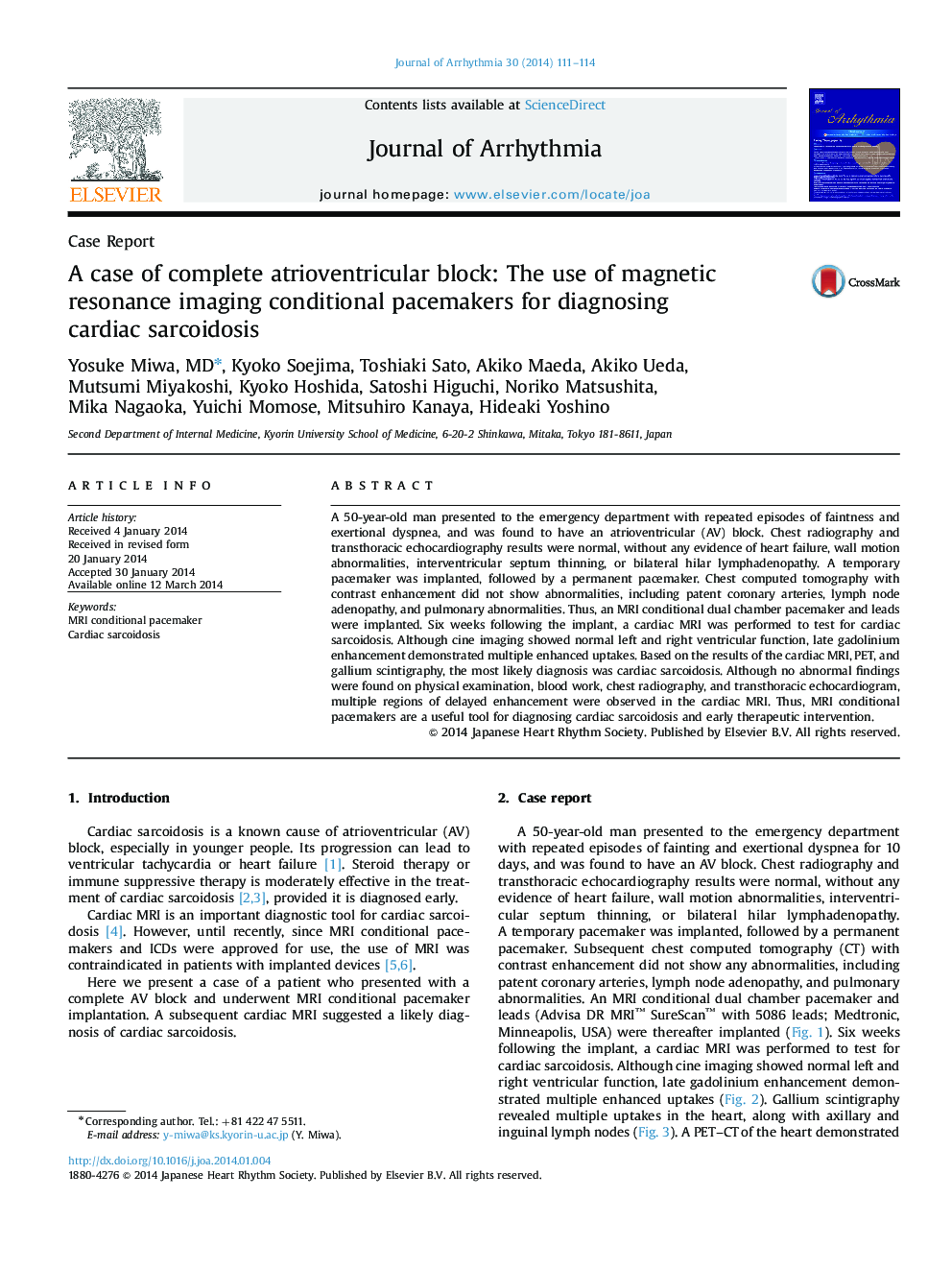| Article ID | Journal | Published Year | Pages | File Type |
|---|---|---|---|---|
| 2957744 | Journal of Arrhythmia | 2014 | 4 Pages |
A 50-year-old man presented to the emergency department with repeated episodes of faintness and exertional dyspnea, and was found to have an atrioventricular (AV) block. Chest radiography and transthoracic echocardiography results were normal, without any evidence of heart failure, wall motion abnormalities, interventricular septum thinning, or bilateral hilar lymphadenopathy. A temporary pacemaker was implanted, followed by a permanent pacemaker. Chest computed tomography with contrast enhancement did not show abnormalities, including patent coronary arteries, lymph node adenopathy, and pulmonary abnormalities. Thus, an MRI conditional dual chamber pacemaker and leads were implanted. Six weeks following the implant, a cardiac MRI was performed to test for cardiac sarcoidosis. Although cine imaging showed normal left and right ventricular function, late gadolinium enhancement demonstrated multiple enhanced uptakes. Based on the results of the cardiac MRI, PET, and gallium scintigraphy, the most likely diagnosis was cardiac sarcoidosis. Although no abnormal findings were found on physical examination, blood work, chest radiography, and transthoracic echocardiogram, multiple regions of delayed enhancement were observed in the cardiac MRI. Thus, MRI conditional pacemakers are a useful tool for diagnosing cardiac sarcoidosis and early therapeutic intervention.
